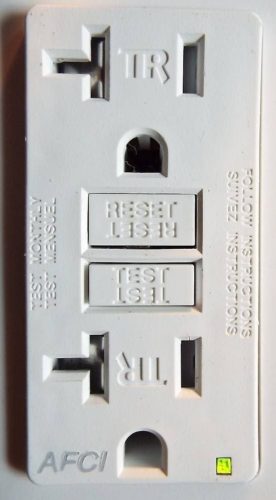

Someone recently asked me what to do about three prong receptacles that have been installed in ungrounded circuits in older homes. It is VERY common to see this in older homes and solutions did not use to be all that problematic. One could either take out the receptacles and replace them with GFI type receptacles or return them to 2 prong type receptacles.
But today, it could mean that $3.00 receptacle is now a $3,000 receptacle.
Depending on what cycle of the electrical code is in effect in your area, this still could be easy–or, as is the case in my area, it could be quite difficult/expensive to address. At the very least it is going to result in quite a learning curve for homeowners and anyone involved in real estate transactions.
For areas that follow the 2014 NEC, as Washington State does (along with 14 other states as of this date), it is not so much complicated as it is expensive when you start messing with the older receptacles–especially in ungrounded wiring systems.
Currently, if you want to change a receptacle, and it is in an old two wire circuit (ungrounded), your options are to change it to a new two prong type receptacle, or to a Tamper Resistant GFCI type receptacle, if it is to be installed in an area that requires Tamper Resistance (the vast majority of locations in the home and outside the home currently); AND, if the replacement is in a location that currently requires AFCI protection, one of the means of providing AFCI protection must be installed.
If someone has already improperly changed the receptacles to three prong type (non GFCI), what exactly would the “repair” be? The repair would be to replace them in accordance with current standards, just the same as if they had never been messed with.
In a sense it would have been better to have left them alone.
In some cases sellers that have improperly changed out receptacles may be on the hook for expenses they might not have incurred had they left the circuits alone. It is quite common in the context of putting homes on the market, to “spruce up” the look of the home with shiny new receptacles.
If the receptacle is being replaced in a three wire system (has a ground wire), then not only must it be replaced with a three prong receptacle that is Tamper resistant (if in an area that requires them) but if that receptacle is also in an area that currently requires AFCI protection then either the receptacle or the circuit itself must be AFCI protected.
“Older homes are statistically more vulnerable to electrical fires. Extra protection for older homes is provided by the gradual replacement, over time, of non-AFCI-protected receptacles with new AFCI-protected ones.”
The NEC
This gets really complicated if there is no more room in the electrical panel for installation of the AFCI breakers. There are AFCI type receptacles (Like the one in the picture above and they look much like a GFI type receptacles) that can be used, but they cost almost as much as a circuit breaker and you might need a lot more of them. They also only protect the circuit from the point where the receptacle is first installed, whereas the entire circuit is protected by the breaker in the panel.
What I am getting at, is that it is completely possible, that in order to upgrade a few receptacles, you might end up having to upgrade your entire electrical service, install a bigger service panel, or add sub-panels to gain space for the AFCI breakers. It could even mean rewiring your home as the safest and most cost effective road to take.
Whatever the solution is, it could turn that $3.00 receptacle into a $3,000 dollar receptacle, and why it might be the most expensive receptacle you have ever purchased.
For those of you that still have knob & tube wiring or other ungrounded wiring systems—the handwriting is indelibly written on the wall.
By Charles Buell, Real Estate Inspections in Seattle
If you enjoyed this post, and would like to get notices of new posts to my blog, please subscribe via email in the little box to the right. I promise NO spamming of your email 🙂